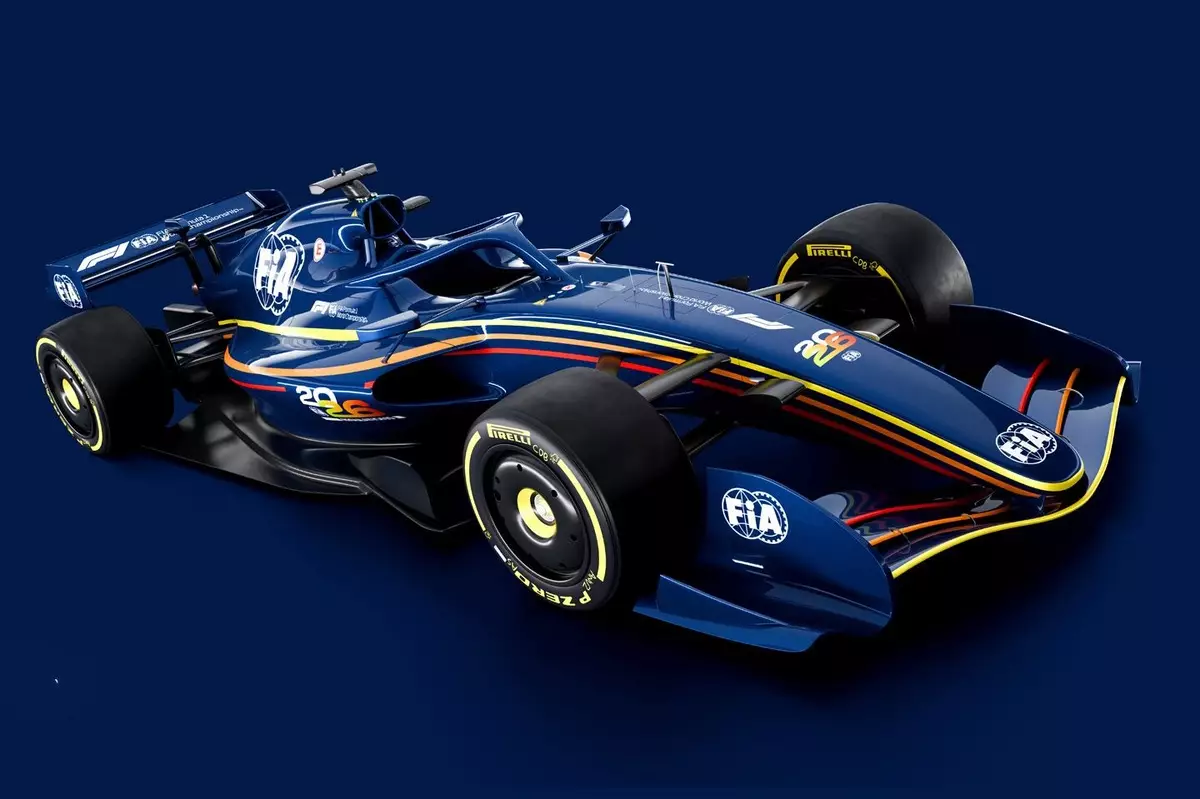The impending regulatory overhaul planned for 2026 marks a fundamental shift in Formula 1’s evolution, promising to redefine racing dynamics and challenge conventional notions of speed. The paddock buzzes with anticipation—not just about the technical changes but about the broader implications for how teams, drivers, and fans will experience the sport. This overhaul signifies more than mere regulation tweaks; it introduces a new era where ingenuity and adaptability will determine success.
The focus isn’t solely on raw lap times but on the essence of racing—excitement, skill, and strategy. While initial impressions from drivers and engineers suggest a different ‘feel’ on the track, ultimately, this change aims to prioritize close competition. One of the core objectives is to enhance overtaking opportunities and reduce the dominance of a few top teams, thereby creating a more unpredictable and engaging spectacle. The regulations seem deliberately crafted to shift the emphasis from raw power to aerodynamic finesse, strategic energy management, and driver finesse.
This paradigm shift extends beyond mere car performance. It’s about fostering a racing environment where unpredictability reigns, and every lap counts in different ways. Teams that adapt swiftly and innovate creatively will have a genuine chance to move up the grid, fostering a more vibrant, competitive landscape. Such regulation-driven evolution can be a double-edged sword—if managed successfully, it will inject fresh energy; if poorly executed, it risks alienating fans used to the current speed and spectacle. However, the overall intent is clear: to craft a future where racing is less about raw speed and more about tactical brilliance.
The Nuances of Speed: Slower Cars, Richer Competition
It’s counterintuitive at first glance—why slow down cars when fans crave the thrill of blistering speed? The FIA’s approach indicates a nuanced understanding of racing’s core appeal. Although the new vehicles will be marginally slower in terms of lap times—initial simulations suggest a decrease of one to two and a half seconds—they will retain elements that maintain or even enhance excitement. The objective isn’t to diminish the sport’s intensity but to redefine it, focusing on how races unfold rather than how quickly they end.
The reduced downforce will make corners feel more treacherous and unpredictable, compelling drivers to adapt their techniques. High-speed straights will become the new battleground, where raw power and energy management will clash in a competition of strategy. This shift will likely alter the traditional balance of skills, emphasizing precision and channeling more aggressive overtaking maneuvers. It’s a deliberate move away from the ‘fast in a straight line’ dominance, pushing teams to innovate aerodynamically and aerobraking to bring the racing closer.
Critics might worry that slower cars could diminish the spectacle, but the FIA’s stance emphasizes evolution over stagnation. They argue that lap times have always fluctuated throughout racing history—slower cars are just another chapter in a dynamic sport. If drivers and teams adapt effectively, this regulatory shift could foster more dramatic, wheel-to-wheel battles, making the races more engaging regardless of overall speed. The key lies in maintaining that delicate balance between challenge and excitement.
Redefining Overtaking: More Than Just a Flap of the Wing
One of the most significant changes in 2026 is the elimination of DRS (Drag Reduction System), a staple for overtaking in modern F1. Instead, this new era introduces active aerodynamics—X-mode and Z-mode—that offer constant low-drag configurations on straights, essentially granting drivers a form of permanent overtaking aid. Complementing this is the manual override boost, reminiscent of the iconic push-to-pass systems used in other racing series like IndyCar.
This innovation positions overtaking as a more strategic and skill-dependent element of racing. Instead of relying on a toggle switch, drivers will have to actively decide when and how to deploy their boost, adding layers of tactical depth. The challenge is to calibrate this feature so that overtaking becomes a skillful dance—difficult enough to maintain fairness but not so hard that it discourages bold moves. This fine-tuning process, ongoing through simulator testing, underscores a crucial principle: racing should be about courage and ingenuity, not just technical advantages.
Furthermore, this change hints at a future where overtaking appears more natural, less artificial than in the current DRS-dominated era. The active aerodynamics and manual boost will create moments of high tension and suspense, where drivers must carefully judge their moves—blending finesse, timing, and daring.
Insights and Expectations: What Fans and Teams Can Anticipate
The overarching goal appears to be the restoration of close, competitive racing that captivates fans without sacrificing the complexity and technological innovation that define F1. While initial simulations predict cars will be slightly slower, the evolving development race should see performance levels sharpen over time. This ongoing evolution ensures that lap times will continue to improve as teams refine their designs, keeping the sport fresh and unpredictable.
However, uncertainty remains. The FIA admits they lack comprehensive data from all teams, especially in terms of downforce levels, meaning early predictions could shift significantly. This acknowledgment underscores the experimental nature of these regulations—they are designed to adapt and evolve based on real-world, on-track data, which should ultimately benefit the sport by fostering innovation and resilience.
More importantly, the shift towards closer racing and enhanced overtaking opportunities reflects a broader philosophical stance: F1 should prioritize exciting competition over mere speed. If executed correctly, these changes will revitalize the sport, attracting a broader audience and inspiring teams to push boundaries in new ways. Ultimately, F1’s future depends on its ability to blend technological ingenuity with a racing format that is thrilling, unpredictable, and accessible.
—
This new approach to F1’s regulation overhaul symbolizes a strategic renaissance—one focused on emphasizing skill, strategy, and the thrill of competition rather than just raw speed. It’s a testament to the sport’s capacity for reinvention and growth, promising an exhilarating chapter for teams and fans alike.

